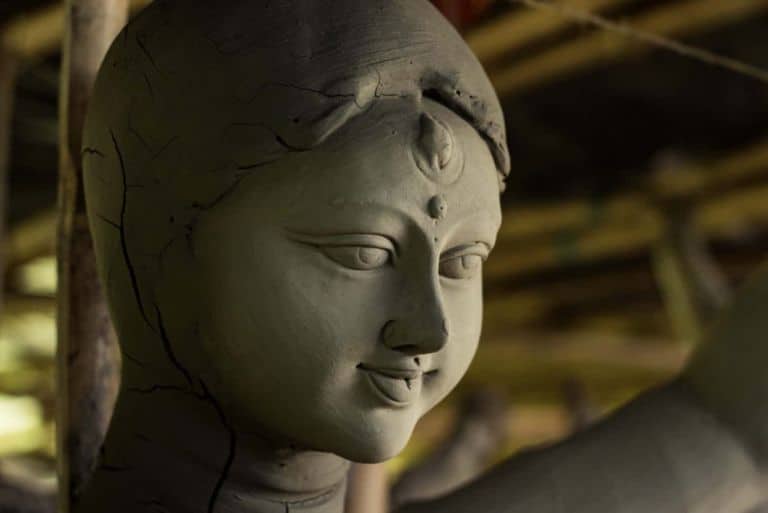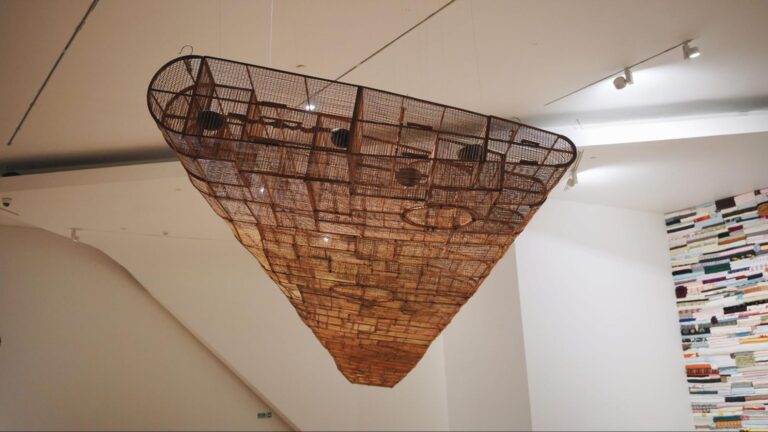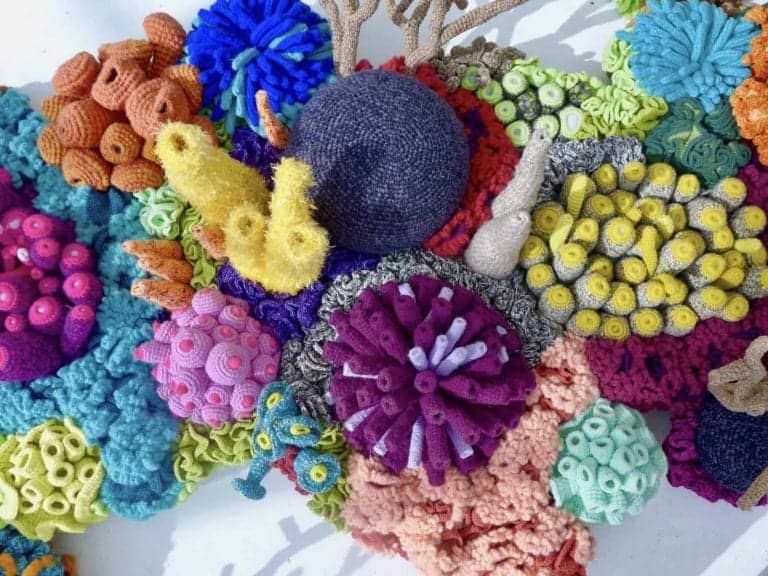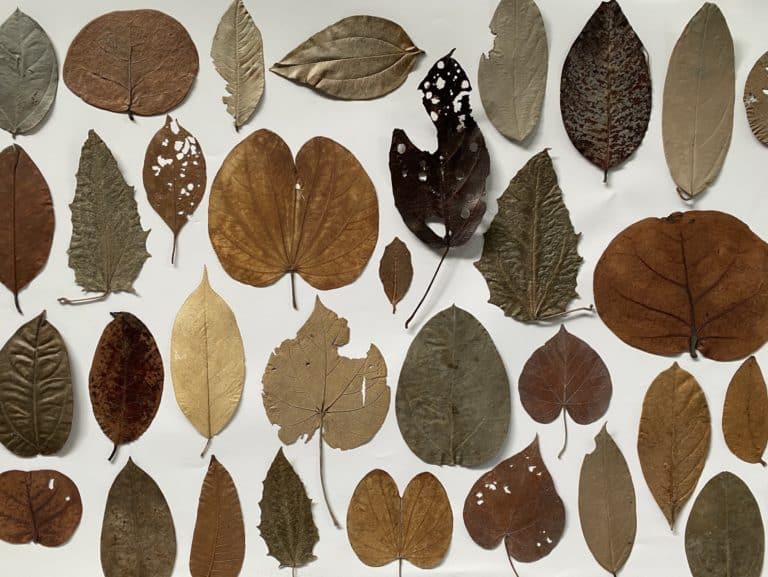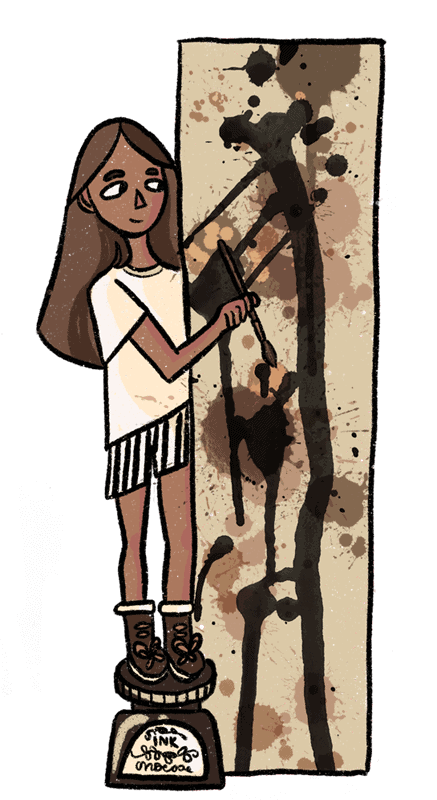
…is for ink.
Ink painting as we know it today can be dated back to the Warring States (475–221 BCE), which is to say it has been in existence for more than 2,000 years! Due to its long and deeply rooted history in China, the term “ink painting” is often used interchangeably with notions of “Chinese painting”.
Ink (mo 墨) refers to the solid inkstick made mainly of soot and animal glue, sometimes with incense or scents added. The artist or calligrapher would grind the inkstick against an inkstone with a small quantity of water to produce a dark liquid, which can then be applied with an ink brush. Hence, ink painting is known as shui mo hua (水墨画) in Chinese, which literally translates to “water-ink painting”.
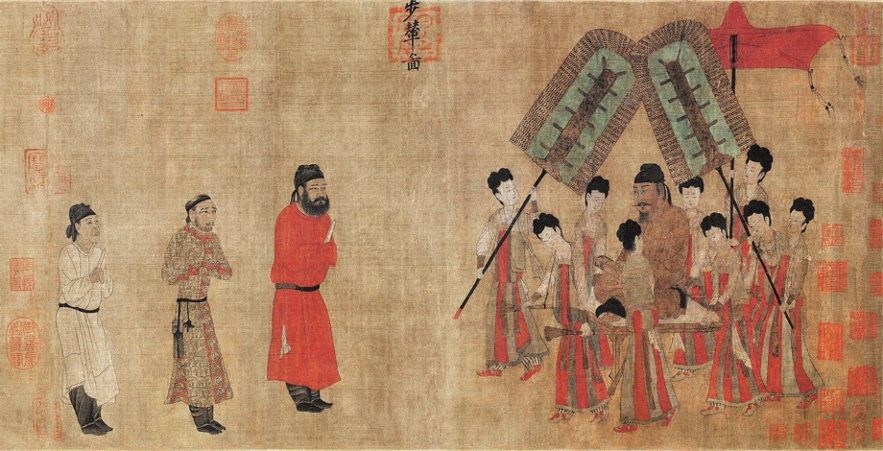
Ink works can traditionally be broadly categorised into landscapes, visual records of historical scenes, and calligraphy works. Some of the best-known works depicting historical scenes are Emperor Taizong Receiving the Tibetan Envoy (bu nian tu 步辇图) and Along the River During the Qingming Festival (qing ming shang he tu 清明上河图) (see below).
The former was painted by Yan Liben (閻立本) (618–907), one of the most revered Chinese figure painters in the early years of the Tang dynasty. The work, showing the friendly encounter between the Tang dynasty and Tubo in 641, is historically significant, and also lauded for its artistic merit due to its traditional fine line drawing technique as reflected in the vivid figures, and skilfully applied bright colours evoking a festive atmosphere.
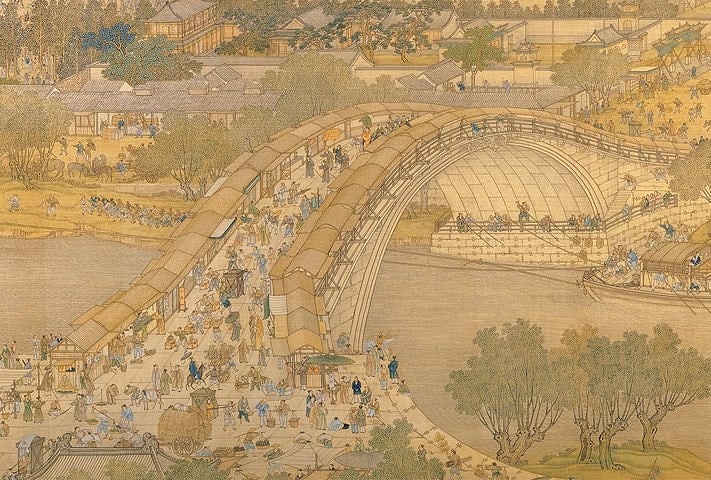
Along the River During the Qingming Festival, painted by one of the greatest landscape painters given patronage by the Song court, Zhang Zeduan (张择端) (1085–1145), remains one of the most well-known masterpieces of Chinese visual art today. The detailed, geometrically accurate depiction of bridges, shophouses, and street scenes beautifully captured the daily lives of people, as well as the landscape of the Song capital, Bianjing. Sometimes referred to as the Mona Lisa of China, Along the River During the Qingming Festival is also famous for the forgeries of the work that have been in circulation since the fourteenth century. In fact, the National Palace Museum in Taipei claims to possess ten copies of Along the River During the Qingming Festival in its collection. While scholars believe that the true original is in the Palace Museum in Beijing, there are conspiracists who believe that there is a possibility that a forgery could have been substituted at some point — these dramatic stories add further mystery to this painting.
Although court painters in the Tang and Song Dynasties had produced historically important realist works, landscape paintings like Fan Kuan (范宽)’s (950–1032) Travelers Among Mountains and Streams (xi shan xing lü tu溪山行旅图) form the bulk of the corpus of traditional Chinese paintings and are widely regarded as the highest form of ink paintings. Landscape paintings are deemed to be more than representations of nature. They are the expressions of the individual artists and reflect their respective levels of cultural attainment.

Even the introduction of photography to China in the 1840s did not diminish the importance of ink works. In fact, photographic prints were often inscribed with calligraphy and occasionally even mounted on silk. Nineteenth-century studio photographs bear signs of retouching with an ink brush and popular motifs in traditional ink painting such as bamboos and plums were commonly added. By the first two decades of the twentieth century, a characteristic product of photography in China was one juxtaposed with prints, cartoons, and reproductions of traditional ink paintings.
As Yi Gu explains in the article What’s in a Name? Photography and the Reinvention of Visual Truth in China, 1840 – 1911, “because of the heavy retouching and calligraphic additions, photographs were approached as composite objects incorporating components of various media.”
In Liang Shitai’s 1888 work Seventh Prince with Deer, a casual portrait of Prince Chun Xian Yihuan sees the prince standing in the company of a deer, while dressed in a plain long robe and holding a pine branch. Both deer and pine branch are Chinese symbols of longevity and immortality and one can see that the pine needles have been enhanced with dots of ink “which stand out as conspicuous attempts to imitate those applied to similar subjects in painting”. The photograph also carries two seals that were produced through retouching of the negative.

The early 1960s marked an important turning point for ink painting with the emergence of the “modern Chinese ink painting (xian dai shui mo 现代水墨)” era. During this period, artists shifted away from traditional methods of painting to incorporate Western techniques and new or localised subject matter. Artists associated with the modern ink developments include Wu Guanzhong (1919-2010), Liu Kuo-sung (b. 1932), Lui Shou-kuan (1919-1975), Wucius Wong (b. 1936), and of course Singapore’s very own Nanyang artists, Cheong Soo Pieng (1917-1983), Chen Chong Swee (1910-1985) (Fig. 5), Liu Kang (1911-2004), Chen Wen Hsi (1906-1991) and Georgette Chen (1906-1993).

Today, ink painting has gained international recognition in the contemporary art world, with renowned institutions such as the Metropolitan Museum of Art staging the Ink Art: Past as Present in Contemporary China exhibition in 2013. Ink works have also seen commercial success in auctions in recent years, where works by prominent names such as Wu Guanzhong and Liu Kuo-sung have fetched prices as high as several million dollars.
Internationally, artists like Gu Wenda (b. 1955), Xu Bing (b. 1955), and Zhang Huan (b. 1965) continue to push boundaries in ink by experimenting with new forms of calligraphy and expressions. In a 2001 work Family Tree, Zhang used his face as a surface on which words relating to his cultural heritage were written. In this series of nine photographs, more and more ink words were added until the artist’s face was completely blackened. As the Metropolitan Museum of Art explains, “most words derive from the ancient Chinese art of physiognomy, which seeks to map personality traits and divine the future based on one’s facial features. But rather than elucidating Zhang’s character and fate, these traditional divinatory marks ultimately obscure his identity beneath a dense layer of culturally conditioned references”.
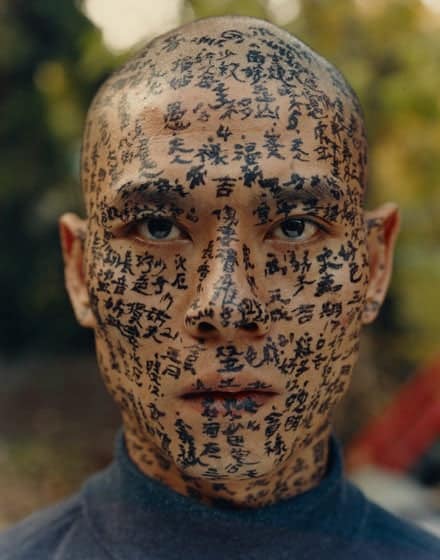
Closer to home, Singaporean artists such as Yeo Shih Yun (b. 1976) and Mark Chan (b. 1959) innovate in the genre by incorporating robotics and music respectively, into their art. In a 2019 interview with the Business Times, Chan has said this about the allure of ink, “I love the fact that when you apply ink on paper, you cannot change it. The mark stays there forever. It’s not like oil or acrylic paint; with oil or acrylic, you move the paint around; it’s part of the technique. But once ink hits paper, it’s permanent. Whatever you’ve done, you go with it. In a way, painting in ink is like performing music to a live audience: Once you’ve struck a note with your voice or musical instrument, it’s out there and you can’t take it back. You work with what you’ve done. Your performance is forever.”
With firm roots in the past and constantly evolving experimental movements towards the future, we certainly have much to look forward to in the development of ink, both as a medium and a genre.






